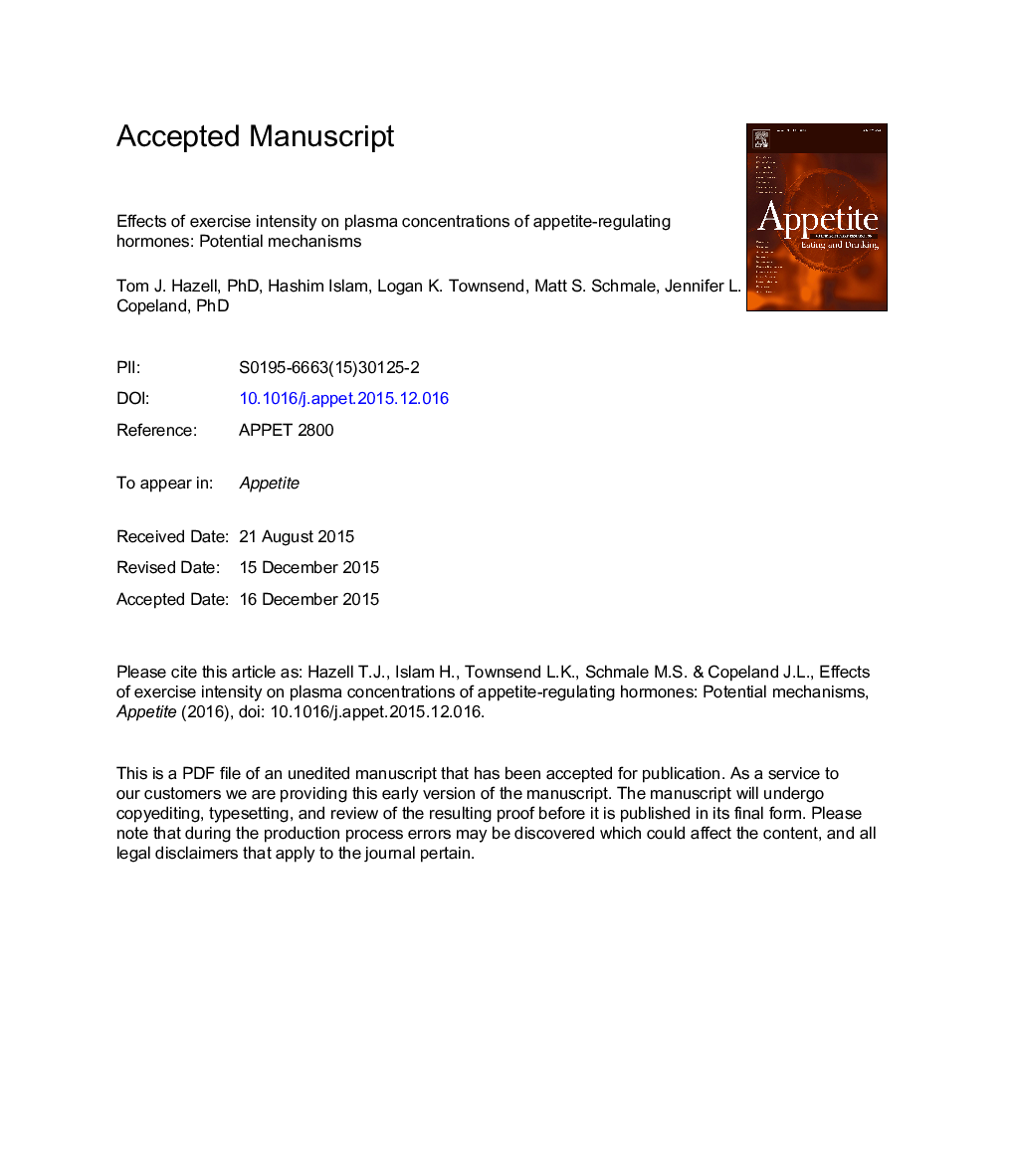| کد مقاله | کد نشریه | سال انتشار | مقاله انگلیسی | نسخه تمام متن |
|---|---|---|---|---|
| 7307712 | 1475382 | 2016 | 37 صفحه PDF | دانلود رایگان |
عنوان انگلیسی مقاله ISI
Effects of exercise intensity on plasma concentrations of appetite-regulating hormones: Potential mechanisms
ترجمه فارسی عنوان
تأثیر شدت تمرکز روی غلظت پلاسمایی هورمونهای تنظیم کننده اشتها: مکانیسم های بالقوه
دانلود مقاله + سفارش ترجمه
دانلود مقاله ISI انگلیسی
رایگان برای ایرانیان
موضوعات مرتبط
علوم زیستی و بیوفناوری
علوم کشاورزی و بیولوژیک
دانش تغذیه
چکیده انگلیسی
The physiological control of appetite regulation involves circulating hormones with orexigenic (appetite-stimulating) and anorexigenic (appetite-inhibiting) properties that induce alterations in energy intake via perceptions of hunger and satiety. As the effectiveness of exercise to induce weight loss is a controversial topic, there is considerable interest in the effect of exercise on the appetite-regulating hormones such as acylated ghrelin, peptide YY (PYY), glucagon-like peptide-1 (GLP-1), and pancreatic polypeptide (PP). Research to date suggests short-term appetite regulation following a single exercise session is likely affected by decreases in acylated ghrelin and increases in PYY, GLP-1, and PP. Further, this exercise-induced response may be intensity-dependent. In an effort to guide future research, it is important to consider how exercise alters the circulating concentrations of these appetite-regulating hormones. Potential mechanisms include blood redistribution, sympathetic nervous system activity, gastrointestinal motility, cytokine release, free fatty acid concentrations, lactate production, and changes in plasma glucose and insulin concentrations. This review of relevant research suggests blood redistribution during exercise may be important for suppressing ghrelin, while other mechanisms involving cytokine release, changes in plasma glucose and insulin concentrations, SNS activity, and muscle metabolism likely mediate changes in the anorexigenic signals PYY and GLP-1. Overall, changes in appetite-regulating hormones following acute exercise appear to be intensity-dependent, with increasing intensity leading to a greater suppression of orexigenic signals and greater stimulation of anorexigenic signals. However, there is less research on how exercise-induced responses in appetite-regulating hormones differ between sexes or different age groups. A better understanding of how exercise intensity and workload affect appetite across the sexes and life stages will be a powerful tool in developing more successful strategies for managing weight.
ناشر
Database: Elsevier - ScienceDirect (ساینس دایرکت)
Journal: Appetite - Volume 98, 1 March 2016, Pages 80-88
Journal: Appetite - Volume 98, 1 March 2016, Pages 80-88
نویسندگان
Tom J. Hazell, Hashim Islam, Logan K. Townsend, Matt S. Schmale, Jennifer L. Copeland,
